Allegro
‘How Much My Music Teacher Meant to Me’
We asked Local 802 members to tell us...
Volume 114, No. 9September, 2014
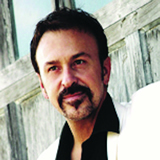
Philip Fortenberry
My favorite music teacher was my great-great Aunt Hilda Johnston. I began playing the piano when I was four years old in a tiny community called Hub, Mississippi. Hub is about 10 miles from the town of Columbia, which is where Aunt Hilda was one of maybe two or three piano teachers. At first I only played by ear, but when I turned seven, I became the pianist for my church when our preacher moved away. His wife had been our pianist, and, of course, he took his wife with him. I knew all the songs our church knew, so playing for church became my job for the next 17 years. I kept that job all the way through college. (In fact, I kept the job until I moved to NYC in 1981 to play for the Broadway production of a show called “Cleavage” – but that’s a whole other story.) Since I was in the second grade by then and had begun to read words, my folks felt that this would be a good time to find me a piano teacher to teach me to read music as well, since that seemed like a skill that might come in handy at some point. They arranged for me to begin studying piano with my Aunt Hilda. A couple of years later, I was invited to perform a program for the Columbia Lions Club. At the time, I was still struggling with the concept of reading music because I had played by ear for so long. So in helping me to prepare for this small concert, Aunt Hilda sat me down and played some recordings of a variety of famous pianists – Horowitz, Van Cliburn, Floyd Cramer, even Liberace, of all people – playing all kinds of fabulous music. As life continued to unfold, I moved to New York where I played many Broadway shows. I was fortunate to play in some of our country’s greatest concert venues, from Lincoln Center to Carnegie Hall, from the Kennedy Center to the White House. I never would have imagined that after all those years in NYC, I’d find myself playing my own solo show at the Liberace Museum in Las Vegas. But that’s exactly what happened. The show was called “Liberace and Me,” where I talked a little about Liberace and a whole lot about me. During the show, I shared the story of how my Aunt Hilda first introduced me to Liberace’s unique brand of showmanship, his particular pianistic skills, and his special repertoire. She would have been so excited to learn that I was the hand and body double for Michael Douglas, who played the role of Liberace in the HBO film “Behind the Candelabra.” Aunt Hilda gave me the solid classical foundation required to be able to play whatever I needed as my life and career would continue to develop. She instilled in me a deeply rooted artistic appreciation for music of all kinds as well as a respect for all forms of artistic expression. I miss her with all my heart.
Philip Fortenberry
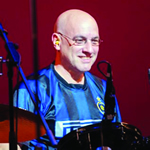
Jon Berger
Percussion Great Ray Desroche, who was my musical mentor, would stop us at any given moment and ask us, “What are you doing with that note?” He taught us that a musician needs to put an absolute clear intent behind every single moment of the music at hand. Another piece of advice: Jazz drummer and educator Michael Carvin told me, “If the people aren’t tapping their feet, you are not doing your job.” Finally, I got some half-joking advice from drumming master Kenwood Dennard . I had an audition for a major pop act and didn’t know what to wear. He suggested I wear a shiny rain suit like we wore in pre-school!
Jon Berger
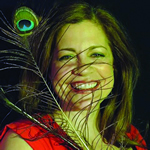
Laurie Dapice (LaRe)
My music teacher Ms. Endy made a significant contribution to my life and dreams. I took choir and music class with her at Clinton High School in Oneida County, New York. Ms. Endy encouraged me, uplifted me with compliments and thought so much about my potential. She chose me to sing a solo in a Clinton town park performance, and I sang Billy Joel’s “Just the Way You Are.” Already at age 14, I was discovering that I had a voice and that I loved to sing. At a vital time like this in someone’s youth, it is critical to have the guidance and support of an encouraging voice to push and lift up your students, to make them feel like they can do it. Because of that one experience, I went on to audition for the all-state choir. Then I followed my dream to become a singer, ultimately earning a BFA at the New School’s jazz and contemporary music program here in NYC.
At the New School, my rhythm section and voice teacher Amy London said many things that made a significant impact on me. She told me to stay true to the melody when you are singing someone else’s tune. Sing it they way they wrote it: always respect the melody.
Another piece of advice was to listen to the great Abbey Lincoln. In fact, I became so enamored of Ms. Lincoln’s lyrics, story and music that I felt motivated to meet her! At the time, she was living in a nursing home on 113th and Amsterdam in Harlem. I walked into her room. That exchange changed my life. I looked into her eyes and we had a conversation that was so enlightening to me. I heard all her beautiful stories about who her favorite singers were and who influenced her. The best part – and the most magical – was that I sang her tune “Throw It Away,” next to her bed. Neither of us blinked when I simply began singing it. She became very lucid, leaning up in bed and looked into my eyes with that intense look of hers. We sang into each other’s souls. It was a life changing moment! It was unforgettable to sit quietly with one of the greatest singers, actors, musicians and storytellers who ever lived.
Laurie Dapice (LaRe)
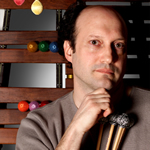
Arthur Lipner
I studied with legendary jazz pianist and educator John Mehegan when I was 10. This was around the time the first of his famous series of books was released. I would go his studio in Westport, Conn., Saturday mornings. He would often be smoking Tiparillos, sometimes have a little wine, and one time showed me $700 in cash that he won “playing the ponies” the night before. But what I remember most is the way John played piano, how much enthusiasm and groove he had, and how inspired I was by each lesson. He always kept time by bouncing his whole left leg on the floor, foot flat, thumping out the beat. My memory is that the only way John knew how to play was to dig in hard. He never wrote tunes out in keys, only Roman numerals, and we would play them in random keys. All styles of music were fair game, whether it be a standard, Shostakovich, a Beatles tune or “Ode to Billie Joe.” I still have the lesson manuscript books 45 years later.
John stored a marimba (of all instruments!) in his studio for friend of his named Sully. One time, Sully came over and the two of them threw down as I watched with saucer-sized eyes. This impromptu duo was the first time I had seen a mallet player. That I would go on to become one was impacted by the presence of that marimba. Even at 10 years old, I sensed that there was something special happening in that studio. It was a magical place where I would go and have experiences I could hardly explain to anyone else, even my parents or friends who studied other instruments elsewhere. I have always thought of John as the model teacher. In my 35 years of teaching, I’ve always strived to be as inspiring and effective as he. Not a day passes where I don’t see him watching over me and my music. What an incredible gift it was to know this man!
Arthur Lipner
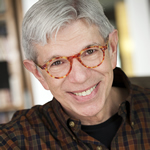
Doug Ramsdell
My most unforgettable musical influence was my junior-high band director, a Finnish-American named Bruno Laakko. We band students never knew that just prior to World War II, he’d led the pioneering swing band in Helsinki (the band was called “Dallapé”), or that his name still appears in all the important accounts of Finnish jazz history. But we did know that he’d fought with the Finns in the Russo-Finnish War, because between numbers, he kept us riveted with his stories of plucky, outnumbered Finns outfighting the Russian invaders in the snow and ice. He drove to school every day in a ‘56 Thunderbird with a Continental kit, and wore a snazzy bow tie and a stylish flattop haircut. The day he brought in his gold-plated tenor and serenaded us, accompanied by some of his old Dallapé 78s on a portable record player, I knew I wanted to play that kind of music on that instrument, and my practicing went from random and half-hearted to focused and directed. How on earth he ended up in a public school system in the late 1950s, teaching a bunch of unruly, distracted suburban junior-high students, I’ll never know, but it was my good fortune that he did. He conducted with a six-inch baton, a twinkle in the eye and a great sense of humor (which he richly needed), instilled a great deal of musicianship among some of the least likely candidates, and awakened a passion for music in some of us that has never left. I don’t know if he ever knew the lasting impact of the example he set, and of course he’s gone now. But when I think of the pivotal figures in my own musical education, he’s right up there in the top rank.
Doug Ramsdell
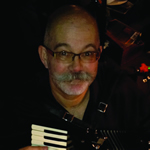
Chip Prince
In 1971, in northern New Hampshire, I was all set to play flute in the high school band – but the band teacher, Dominic Pallaria, had to talk me out of it; he said he had “enough flutes to last until 1980.” And you know, he was right – we did have a lot of flutes! As it happened, the school had just bought a brand-new euphonium, so he assigned me to learn to play that. And play it I did, for the next four years plus two more in college. Although I am a pianist by trade, I still have a love for the euphonium.
But my favorite memory was of a trip he and I took to Boston. Mr. Pallaria (we students referred to him as “Dom,” but only when he wasn’t around) was working on his master’s degree at the Boston Conservatory, and one semester he needed an accompanist for a jury exam. He gave me the piano part to the Hindemith Clarinet Sonata, and we practiced the first movement together a few times in the music room at school. Finally one Saturday he and I drove the three-plus hours to Boston to perform it for the jury. I was 15, and although I had some experience accompanying school choirs and church groups, this was the first time I had done anything quite as grand and grown-up as this. Afterwards, the professors on the jury were very complimentary to me (although I wasn’t the one being judged), and I think that from then on I knew deep down that I would always want to be a musician — and an accompanist, too, rather than a solo pianist. I’d say Mr. Pallaria helped light that fire. Here’s to you, Dom!
Chip Prince
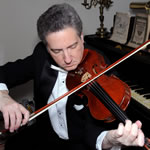
Raphael Klayman
While my many excellent violin teachers have included such greats as Glenn Dicterow and Aaron Rosand, who continue to inspire me, I have fond memories of my first teacher, Harry Fratkin. Mr. Fratkin was a very fine teacher and wonderful person, who had been a student of the legendary pedagogue Leopold Auer and a teacher of Isidore Cohen. Mr. Fratkin used to advise me that you must be at one and the same time your own severest critic and your own greatest admirer. I still think that’s good advice for music and for life.
Raphael Klayman
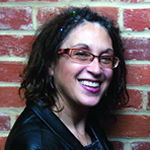
Su Terry
I’ll never forget Mr. Al Burbank, who was my junior high school band and jazz band director. Mr. Burbank was a trumpeter. He had the last joint of his ring finger missing, which I always found fascinating. I believe the secret to his success was his relaxed attitude – an attitude I try my best to cultivate not only in my playing but also in my approach to teaching. Mr. Burbank’s famous aphorisms? “Don’t play during the rests,” and “Let’s do it again to make sure we didn’t get it right by accident.”
Su Terry
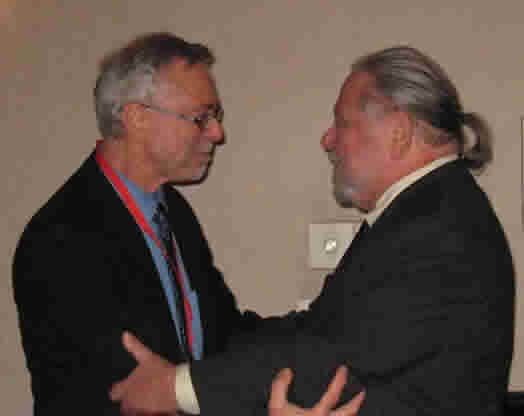
Local 802 member Joseph Rutkowski (left) and his teacher, Lawrence Sobol. Photo: Vicki Jones Raspina
Ever since I can remember, music was the main activity in my family (after eating). My father was a Local 802 member and a club date drummer, who also played the accordion, guitar and harmonica. His father and brother were musicians whom he played gigs with. Growing up in Queens, I recall jam sessions that my dad would have in our house. It was most exciting for my brother and me to see our dad playing with groups in public at weddings and other catered affairs that we were invited to.
By the time I was eight, I started accordion lessons. Before long, my brother on drums and I would be playing gigs at catered affairs and in supermarkets (my dad’s day job was being a salesman for a food broker).
When I got to junior high, I started clarinet lessons with the band teacher, Alfred Longo, and joined the school band. We were now living in Suffolk County, Long Island in the town of Central Islip. When my father saw how serious my brother and I were about music, he moved our family to Smithtown where he know about a famous cat named Lawrence Sobol, who was the music teacher.
My first day at Smithtown Central High School was very memorable. I was a junior with only two years of high school left. Before classes began, I made my way to the music rooms and found a large and imposing man who was kibitzing with several students. I introduced myself and told him that I played the clarinet. “That’s my instrument, you know,” Mr. Sobol remarked. “Band starts tomorrow. I’ll see you period 4.”
The first band rehearsal was devoted to 45 minutes of mastering “The Star Spangled Banner.” I never knew anyone could spend that much time on such a short and simple song. This teacher was so passionate about every kind of music that we all longed for that daily band class during period 4. We played marches for the football games. We played Tchaikovsky, Beethoven, Copland, Rossini and Shostakovich for our winter concert. We put on the professional Broadway version of “My Fair Lady.” Mr. Sobol got the school district to commission a symphony from a famous composer, Alan Hovhaness. Hovhaness came to our school for the final rehearsal of his Symphony No. 23 and the next night, our band played the world premiere.
Mr. Sobol inspired my friends Nelson Kole and Jay Leon to start a jazz rock band with other students. Nelson named the band Exit 56 because of our location off the Long Island Expressway. This group, based on the instrumentation of the band Chicago, became quite famous while we were still in high school. Mr. Sobol was not only a professional clarinetist; he was an artist. He played on the recital stage at Carnegie Hall. My friends and I would take the LIRR into the city to see our teacher play. We would read the rave reviews he got from the New York Times. One day during band class, Mr. Sobol was not there. He was a guest on Bob Sherman’s “The Listening Room” on WQXR. (This was classical radio equivalent of “The Tonight Show” – a very big deal!) The show was broadcast during band class. Mr. Sobol’s substitute set up a radio and we listened to our teacher speak and play his clarinet on this famous show.
Many of my friends became professional musicians or music teachers. Mr. Sobol had made such an impression on me that I became a concert clarinetist myself. I made several solo appearances at Carnegie Hall’s recital stage and I also toured Europe. As my main clarinet teacher, Mr. Sobol attended all of my most important clarinet performances.
His influence over me went even further since I became a high school band and orchestra teacher, which I have been doing for over 30 years. I am so proud of the camaraderie I see in my students at Great Neck North High. It reminds me of what Mr. Sobol established at Smithtown. It was an exciting night when Mr. Sobol accepted my invitation to attend my winter concert at Great Neck North High, seven years ago. During the concert, he got up on the stage and told the audience – made up of my students’ parents – what I was like in high school and how proud he was of me.
One year ago, the Smithtown High School Class of 1972 had our 40th reunion and we invited Mr. Sobol, who showed up, of course. Once again, this man was kibitzing with the same students – who were now close to being 60 years old!
Joseph Rutkowski
